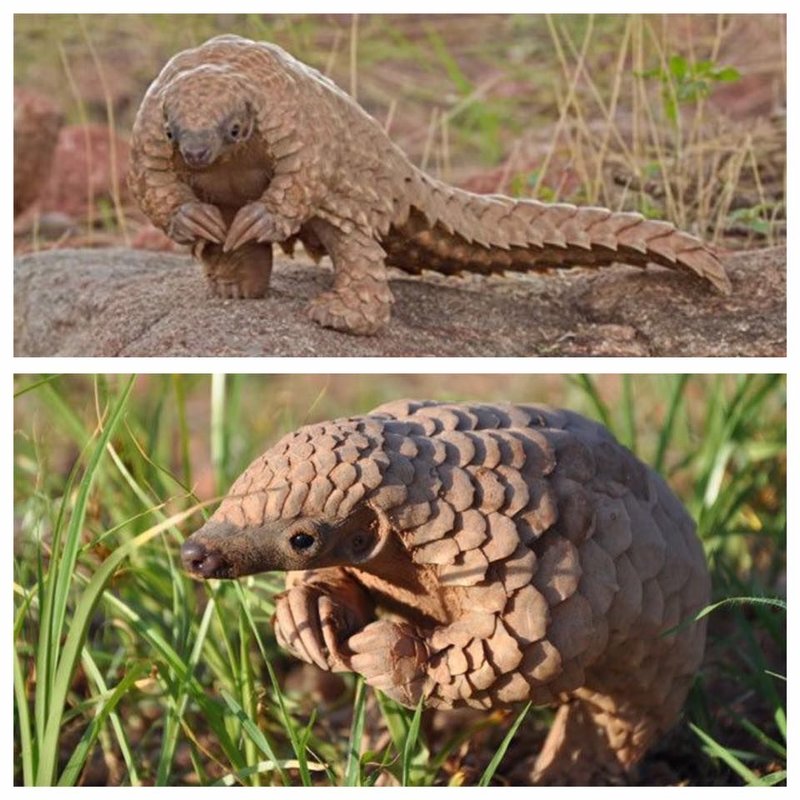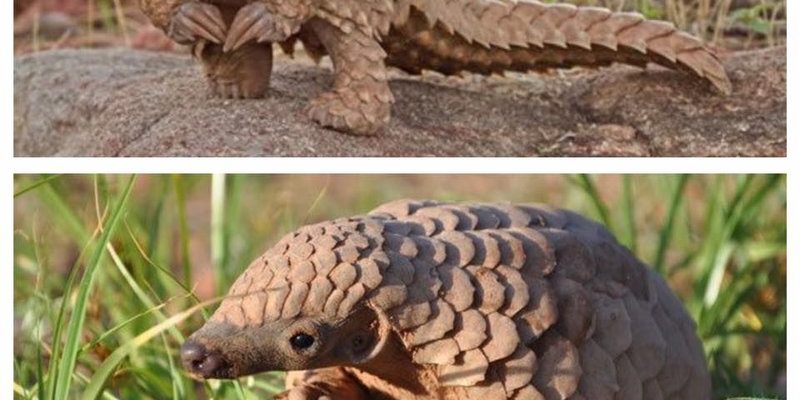
In this article, we’ll explore ten animals similar to the Indian pangolin and help you understand how to tell them apart. Whether you’re a wildlife enthusiast or a curious mind, this journey into the world of these unique creatures will be both enlightening and fun. Let’s dive in!
1. Other Pangolin Species
The Indian pangolin is just one member of the pangolin family. There are eight species in total, and each has its own quirks. The Philippine pangolin, for instance, is smaller and has a different color pattern on its scales. You might say it’s the stylish cousin of the Indian pangolin.
One main way to tell them apart is by habitat. While the Indian pangolin prefers forests and grasslands, the Philippine pangolin is more commonly found in tropical forests. If you’re trying to spot them in the wild, keep an eye out for their environments!
2. The Armadillo
You might be wondering how an armadillo could be related to a pangolin. Both creatures have a tough, protective shell that acts like armor. Think of the armadillo as the American counterpart of the pangolin. However, while pangolins are covered in scales, armadillos wear a more segmented carapace.
Another significant difference is their diet. Armadillos are omnivores, munching on insects, plants, and even small animals, while pangolins are strictly insectivores, primarily feasting on ants and termites. So, if you see one with a more varied diet, you can be sure it’s not a pangolin!
3. The Tenrec
Moving on to Madagascar, we find the tenrec, a small mammal that’s often overlooked. With its spiny fur resembling that of a hedgehog, the tenrec has its own unique charm. Like the pangolin, the tenrec can curl into a ball for protection.
What sets them apart is their method of movement. While pangolins are known for their slow, deliberate crawling, tenrecs are surprisingly quick and agile, darting around their environment. If you see a creature zooming about, chances are it’s not a pangolin!
4. The Aardvark
Let’s hop over to Africa for a moment. The aardvark is another insectivore that shares similarities with the Indian pangolin. Both have elongated snouts designed for snuffling out termites. Honestly, it’s like they’re on a similar mission!
But here’s the kicker: aardvarks are much larger than pangolins, weighing up to 140 pounds. They also have a distinctive body shape, with a more elongated torso compared to the pangolin’s squat build. So, if you encounter a hefty creature with a pointy nose, you might just be looking at an aardvark instead.
5. The Echidna
Although they live on opposite sides of the world, the echidna and the pangolin share some interesting traits. Both have spines for protection and a specialized diet, feeding on insects. You could say they’re like distant relatives who’ve gone down different evolutionary paths.
However, echidnas stand out with their unique reproduction method. They’re one of the few mammals that lay eggs! If you ever spot a creature with spines and a beak-like snout, ask yourself whether it’s an echidna or a pangolin.
6. The Hedgehog
We can’t talk about spiny creatures without mentioning the hedgehog! Like the pangolin, hedgehogs can curl into a ball when threatened, showcasing their protective spines. They’re both adorable in their own right, but the hedgehog is much smaller.
The biggest difference? Their eating habits! Hedgehogs are also omnivores but enjoy a wider variety of foods, including fruits and vegetables, while pangolins stick to insects. So, if you see a tiny, prickly ball munching on a berry, it’s definitely not a pangolin!
7. The Naked Mole Rat
Now, let’s switch gears a little. The naked mole rat may not have the armor of a pangolin, but it shares a love of insects. This quirky little creature lives underground and eats roots and tubers, making it an underground scavenger.
While pangolins have an exterior of scales, naked mole rats are famous for their hairless, wrinkly skin. Their social structures are also fascinating, as they live in colonies similar to ants or bees. So, in the world of similarities, they’re like the weird cousin no one expected!
8. The Slow Loris
On the more exotic side of the scale, we find the slow loris. Like the pangolin, slow lorises have a reputation for being shy and secretive. Both creatures are nocturnal and take their time exploring their environments.
However, they differ dramatically in appearance! The slow loris has big eyes and a rounder body, giving it an endearing look. Plus, they have a venomous bite, unlike the pangolin. If you see a creature with big eyes lounging in a tree, it’s probably a slow loris, not a pangolin.
9. The Opossum
The opossum is another fascinating animal that stands out for its adaptability. While they don’t have scales like the pangolin, they do exhibit a unique defense mechanism: playing dead! This clever tactic helps them avoid danger, similar to a pangolin’s curling up for protection.
Opossums are also much smaller and have a different diet, feasting on a mix of fruits, insects, and even small animals. If you see an animal playing dead instead of rolling up into a ball, you’re likely looking at an opossum.
10. The Sloth
Last but not least, we have the sloth. Known for their leisurely lifestyle, sloths share the pangolin’s slow, deliberate movements. Both animals are also primarily herbivorous, with sloths enjoying a diet of leaves and fruits.
Despite the similarities, sloths are easily distinguishable by their long limbs and facial features. If you come across a creature dangling from a tree, it’s a sloth, no question about it!
There you have it! We’ve explored ten animals similar to the Indian pangolin and discussed how to tell them apart. Each of these creatures has adapted to their environments in unique ways, showcasing the incredible diversity of wildlife.
Next time you’re out and about or simply daydreaming about wildlife, remember these fascinating animals. Whether it’s the spiny armadillo or the quirky tenrec, there’s always more to discover in the animal kingdom. Keep your curiosity alive—there’s a whole world out there waiting for you to explore!

